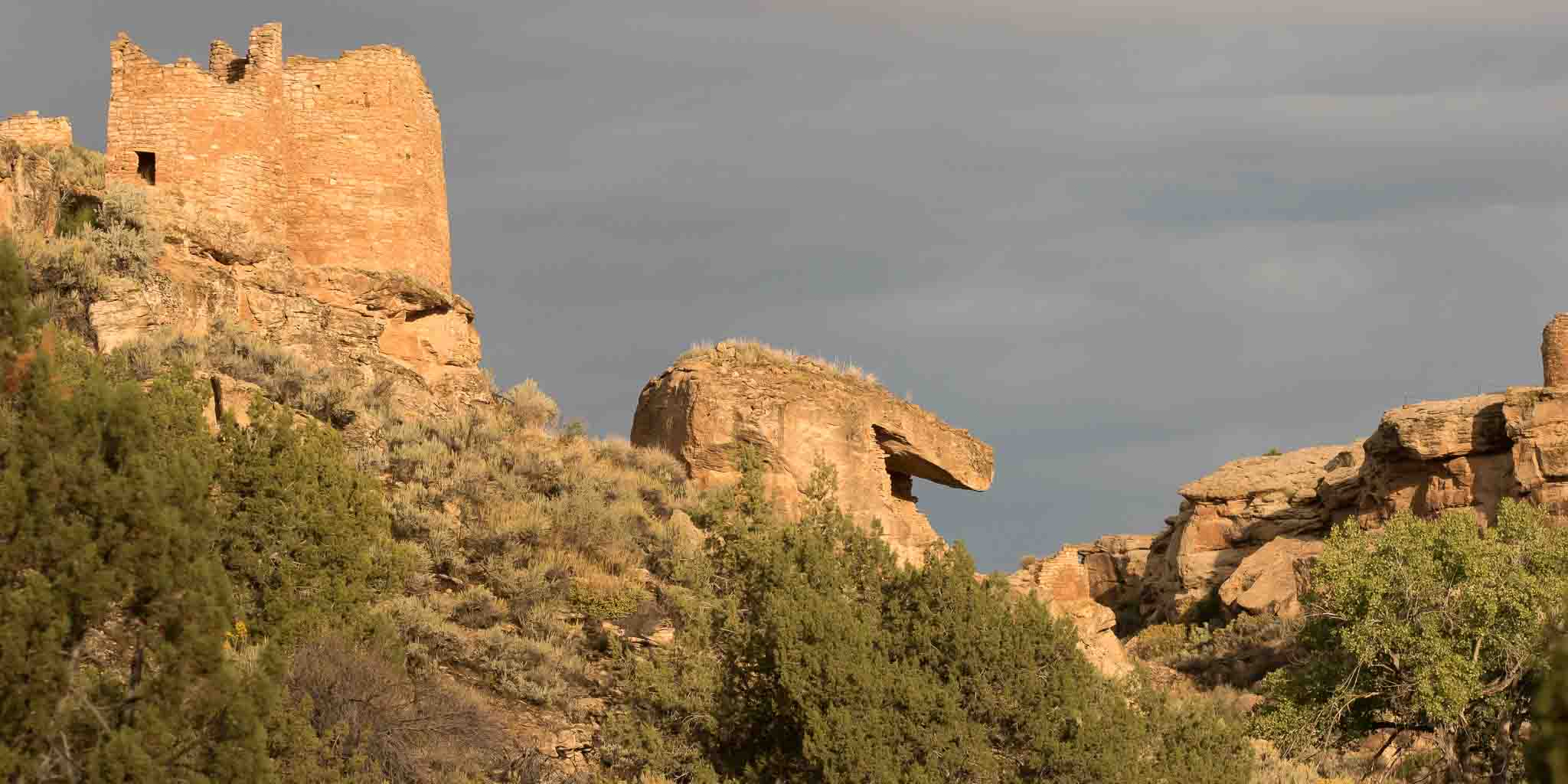Hovenweep National Monument
Hovenweep National Monument
Hovenweep National Monument is located on land in southwestern Colorado and southeastern Utah, between Cortez, Colorado and Blanding, Utah on the Cajon Mesa of the Great Sage Plain. Shallow tributaries run through the wide and deep canyons into the San Juan River.
Although Hovenweep National Monument is largely known for the six groups of Ancestral Puebloan villages and its kiva, there is evidence of occupation by hunter-gatherers from 8,000 to 6,000 B.C. until about AD 200. Later, a succession of early puebloan cultures settled in the area and remained until the 14th century.
Hovenweep became a National Monument in 1923 and is administered by the National Park Service. In July 2014, the International Dark-Sky Association designated Hovenweep an International Dark Sky Park.
Wikipedia: Hovenweep

Sunrise After the Storm {more...}
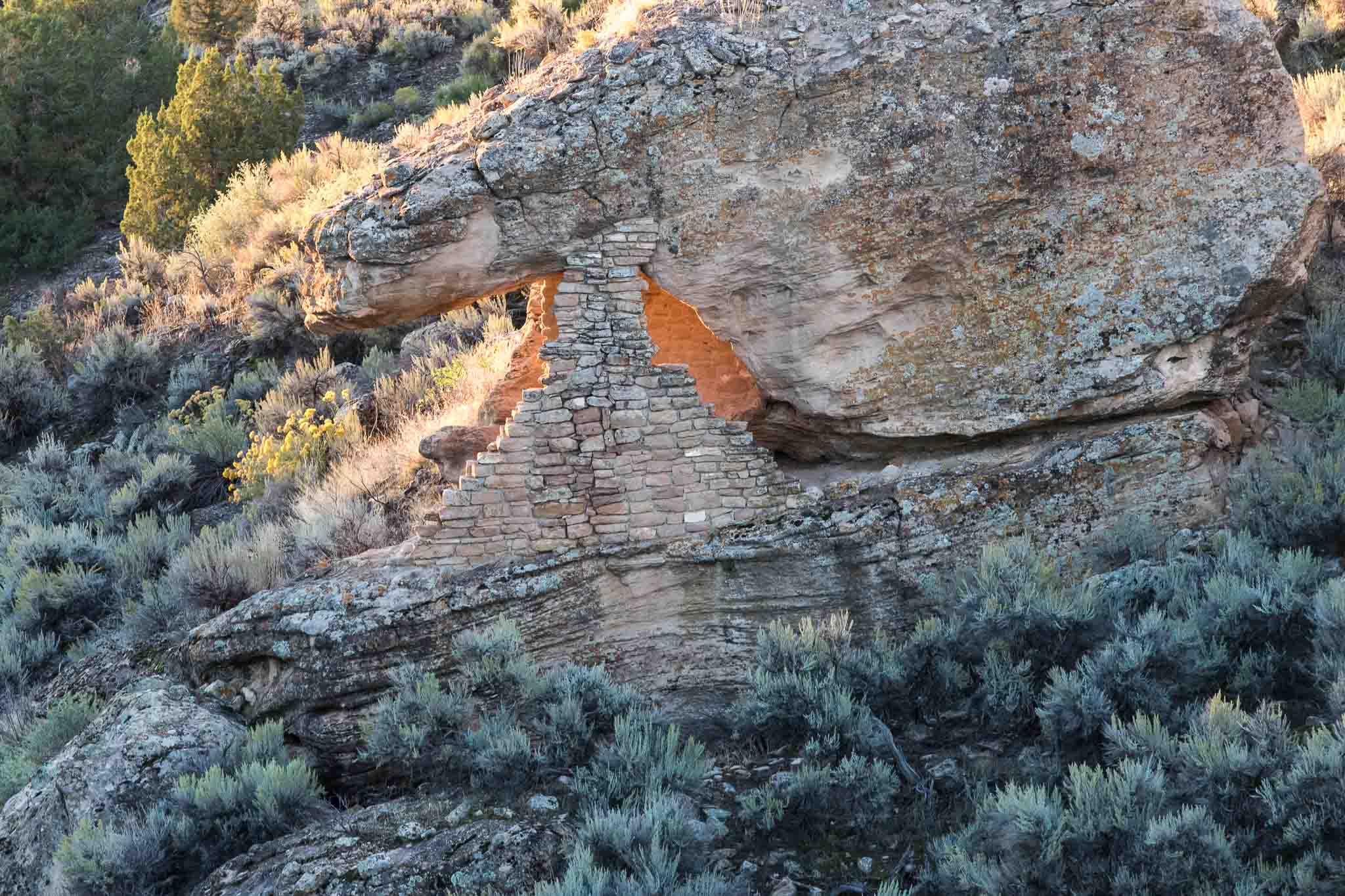
Say "Ahhh...." {more...}

Illusions at Sunrise {more...}

Coast Indian Paintbrush {more...}
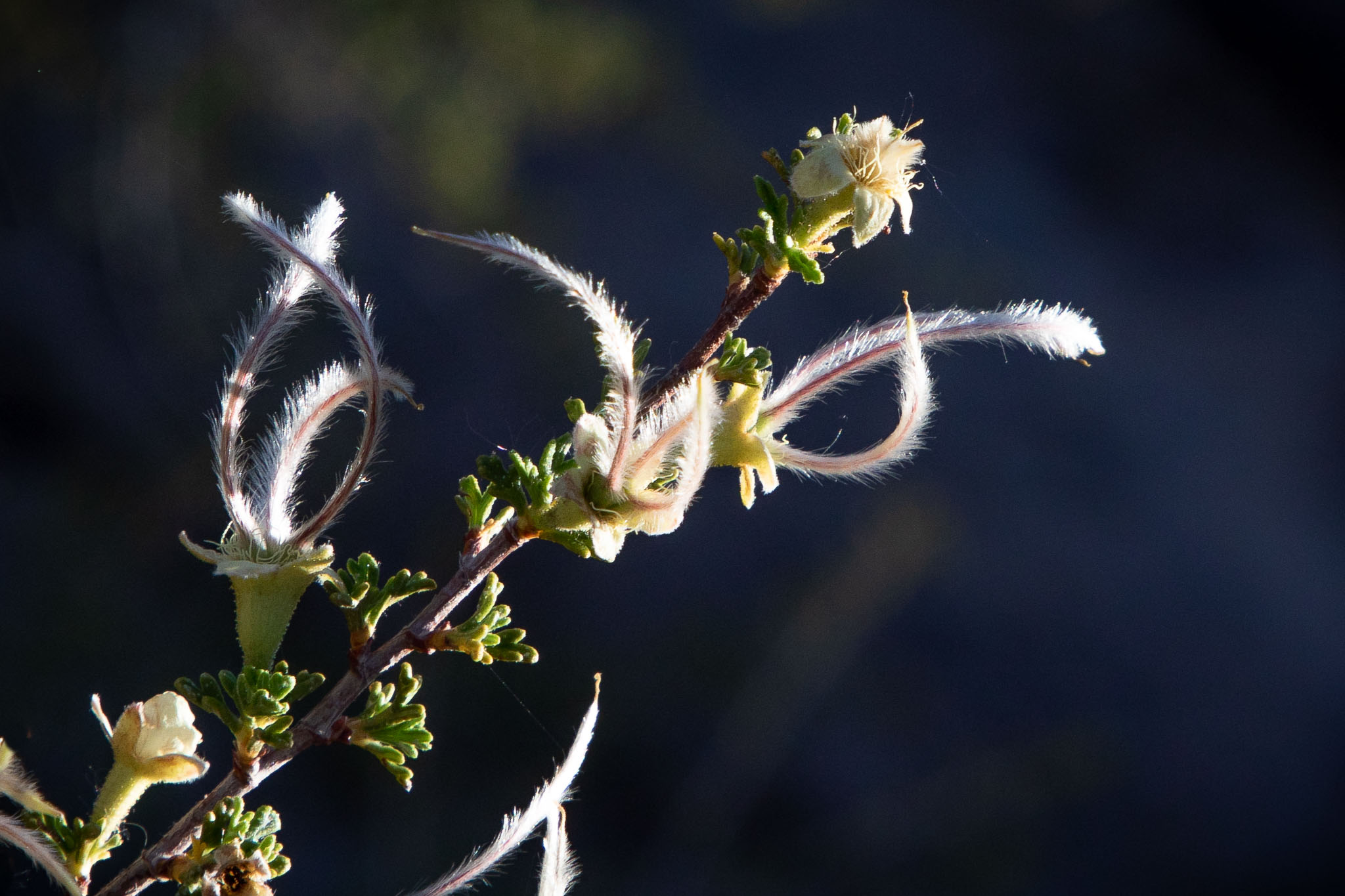
Mexican Cliffrose {more...}
Addenda to Photos
Sunrise After the Storm
Twin Towers and Eroded Boulder House, Hovenweep National Monument, Aneth UT
September 30, 2016
The light! The landscape lit by the rising sun beneath a clouded sky is pure magic!
Say "Ahhh...."
Pareidolia, Eroded Boulder House, Hovenweep National Monument, Aneth UT
October 1, 2016
On this visit to Hovenweep I stumbled on several examples of Pareidolia amongst the ruins and rock formations at the site. Ghosts of residents past perhaps? Fun.
Pareidolia is the phenomenom of seeing images of animals and faces in natural and ordinary objects.
Illusions at Sunrise
Hovenweep Castle, Hovenweep National Monument, Aneth UT
October 11, 2014
Really? Are You Sure? Do you see what you think you see? Zoom in, look closer.
Coast Indian Paintbrush
Hovenweep National Monument, Aneth UT
April 26, 2015
This bright red desert wildflower is an arresting sight. There are many claret cup cactus in bloom here but I found only one clump of these beauties.
Coast Indian Paintbrush, Castilleja affinis
Castilleja Affinis is a species of Castilleja known by the common name coast Indian paintbrush.It is native to western North America from Washington to Baja California, where it grows on hills and mountains slopes along the coast and inland.
This is a perennial herb growing an erect stem up to about 60 centimeters in maximum height. It is greenish to purple in color and may be hairless to quite hairy. The leaves are variable in shape and up to 8 centimeters long. The inflorescence is a series of bracts in shades of bright red to yellowish. Flowers appearing between the bracts are a bit longer and covered in hairs. They are green to purple lined with red or yellow. The fruit is a capsule just over a centimeter long.
Wikipedia
Mexican Cliffrose
Hovenweep National Monument, Aneth UT
May 25, 2018
The Mexican Cliffrose bushes are in full bloom here now, completely covered in their small blossoms and feathery fruits. They must like the extreme drought the southwest is enduring this year.
Inhabitants of the Four Corners area had many uses for these bitterbrush bushes over the millenia.
Early inhabitants used shredded Cliffrose bark for mats and clothing, and for cordage when mixed with yucca fibers.
The Navajo had many uses for these plants. They used the long, thin bark strips older shrubs naturally split into to pad cradleboards and make pillows for their infants. They made female prayer sticks from Cliffrose wood. Thin, straight branches were used to make arrows.
The Hopi used a tea made from the leaves and twigs to induce vomiting, and to heal wounds.
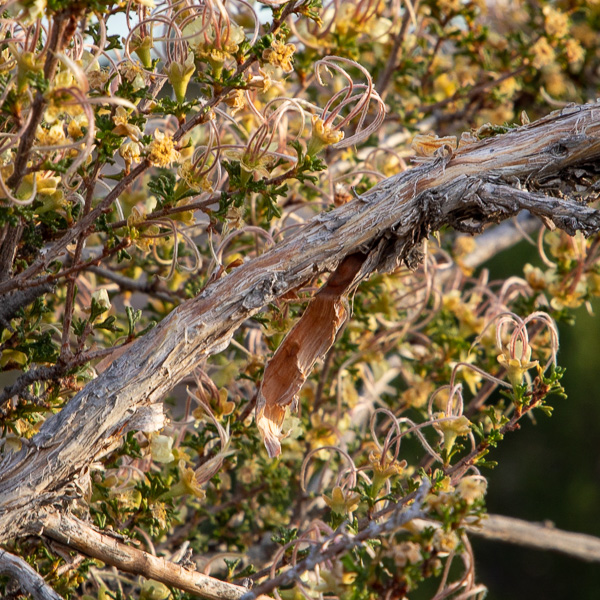
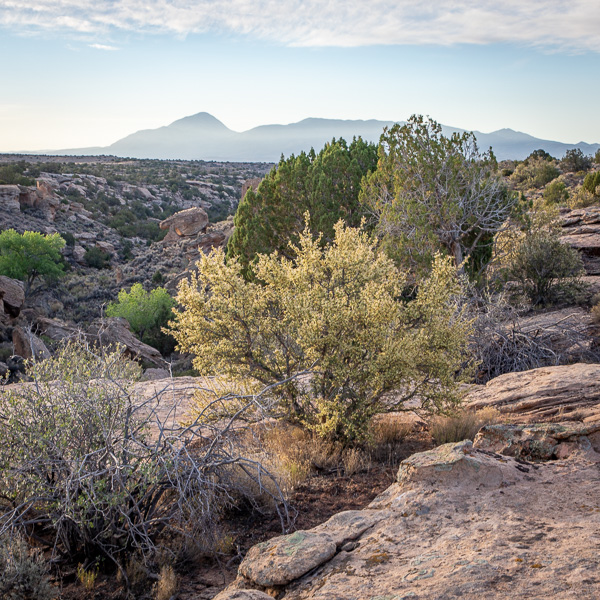
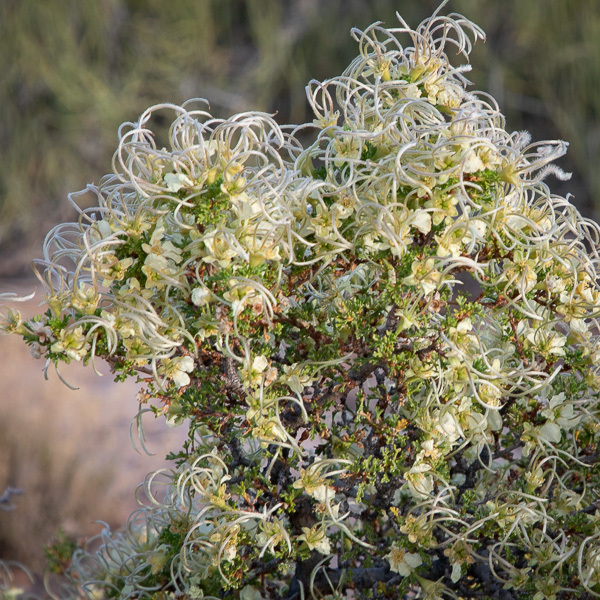
Purshia
Purshia (bitterbrush or cliff-rose) is a small genus of 5-8 species of flowering plants in the family Rosaceae, native to western North America, where they grow in dry climates from southeast British Columbia in Canada south throughout the western United States to northern Mexico. The classification of Purshia within the Rosaceae has been unclear. The genus was originally placed in the subfamily Rosoideae, but is now placed in subfamily Dryadoideae.
They are deciduous or evergreen shrubs, typically reaching 0.3–5 m tall. The leaves are small, 1–3 cm long, deeply three- to five-lobed, with revolute margins. The flowers are 1–2 cm diameter, with five white to pale yellow or pink petals and yellow stamens. The fruit is a cluster of dry, slender, leathery achenes 2–6 cm long. The roots have root nodules that host the nitrogen-fixing bacterium Frankia.
The evergreen species were treated separately in the genus Cowania in the past; this genus is still accepted by some botanists.
Species
Wikipedia / Purshia
- Purshia ericifolia — Heath cliffrose. Texas.
- Purshia glandulosa — Desert bitterbrush. Nevada, Utah, Arizona.
- Purshia mexicana — Mexican cliffrose (syn. Cowania mexicana). Mexico, Arizona.
- Purshia pinkavae — Pinkava's cliffrose. Arizona.
- Purshia plicata — Antelope bush (syn. Cowania plicata). Mexico (Nuevo León).
- Purshia stansburyana — Stansbury cliffrose (syn. P. mexicana var. stansburiana, Cowania stansburiana). Idaho south to California, Arizona and New Mexico.
- Purshia subintegra (possibly a hybrid between P. pinkavae and P. stansburyana). Arizona.
- Purshia tridentata — Antelope bitterbrush. British Columbia south to California and New Mexico.
